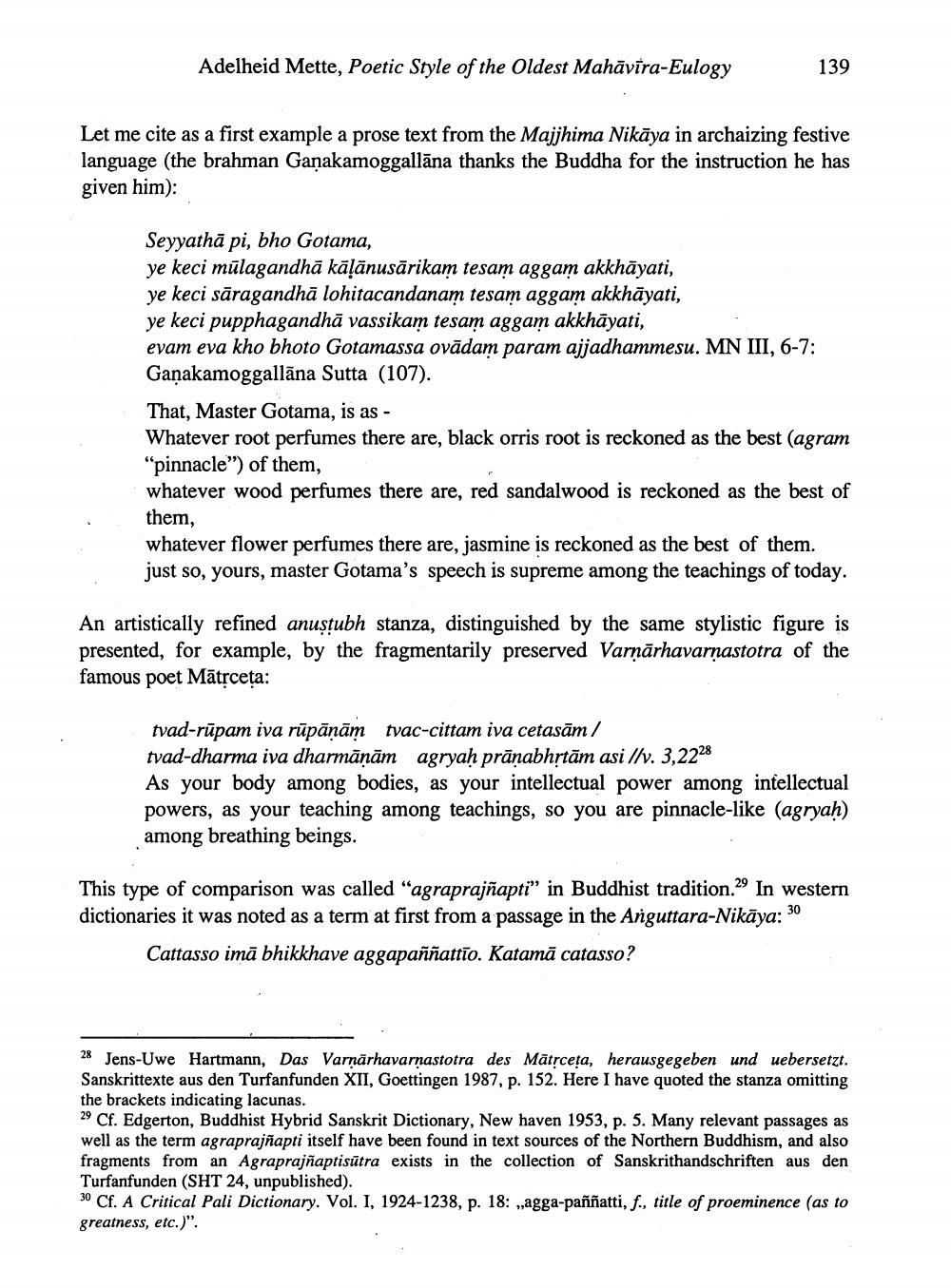________________
Adelheid Mette, Poetic Style of the Oldest Mahāvīra-Eulogy
139
Let me cite as a first example a prose text from the Majjhima Nikāya in archaizing festive language (the brahman Ganakamoggallāna thanks the Buddha for the instruction he has given him):
Seyyathā pi, bho Gotama, ye keci mülagandhā kāļānusārikam tesam aggam akkhāyati, ye keci sāragandhā lohitacandanam tesam aggam akkhāyati, ye keci pupphagandhā vassikam tesam aggam akkhāyati, evam eva kho bhoto Gotamassa ovādam param ajjadhammesu. MN III, 6-7: Ganakamoggallāna Sutta (107). That, Master Gotama, is as - Whatever root perfumes there are, black orris root is reckoned as the best (agram "pinnacle") of them, whatever wood perfumes there are, red sandalwood is reckoned as the best of them, whatever flower perfumes there are, jasmine is reckoned as the best of them. just so, yours, master Gotama's speech is supreme among the teachings of today.
An artistically refined anustubh stanza, distinguished by the same stylistic figure is presented, for example, by the fragmentarily preserved Varņārhavarṇastotra of the famous poet Mātịceta:
tvad-rūpam iva rūpāņām tvac-cittam iva cetasām/ tvad-dharma iva dharmāņām agryah prāṇabhrtām asi //v. 3,2228 As your body among bodies, as your intellectual power among intellectual powers, as your teaching among teachings, so you are pinnacle-like (agryah) among breathing beings.
This type of comparison was called "agraprajñapti" in Buddhist tradition.29 In western dictionaries it was noted as a term at first from a passage in the Anguttara-Nikāya: 30
Cattasso imā bhikkhave aggapaññattio. Katamā catasso?
28 Jens-Uwe Hartmann, Das Varņārhavarnastotra des Mātịceta, herausgegeben und uebersetzt. Sanskrittexte aus den Turfanfunden XII, Goettingen 1987, p. 152. Here I have quoted the stanza omitting the brackets indicating lacunas. 29 Cf. Edgerton, Buddhist Hybrid Sanskrit Dictionary, New haven 1953, p. 5. Many relevant passages as well as the term agraprajñapti itself have been found in text sources of the Northern Buddhism, and also fragments from an Agraprajñaptisütra exists in the collection of Sanskrithandschriften aus den Turfanfunden (SHT 24, unpublished). 30 Cf. A Critical Pali Dictionary. Vol. I, 1924-1238, p. 18: „agga-paññatti, J., title of proeminence (as to greatness, etc.)".




